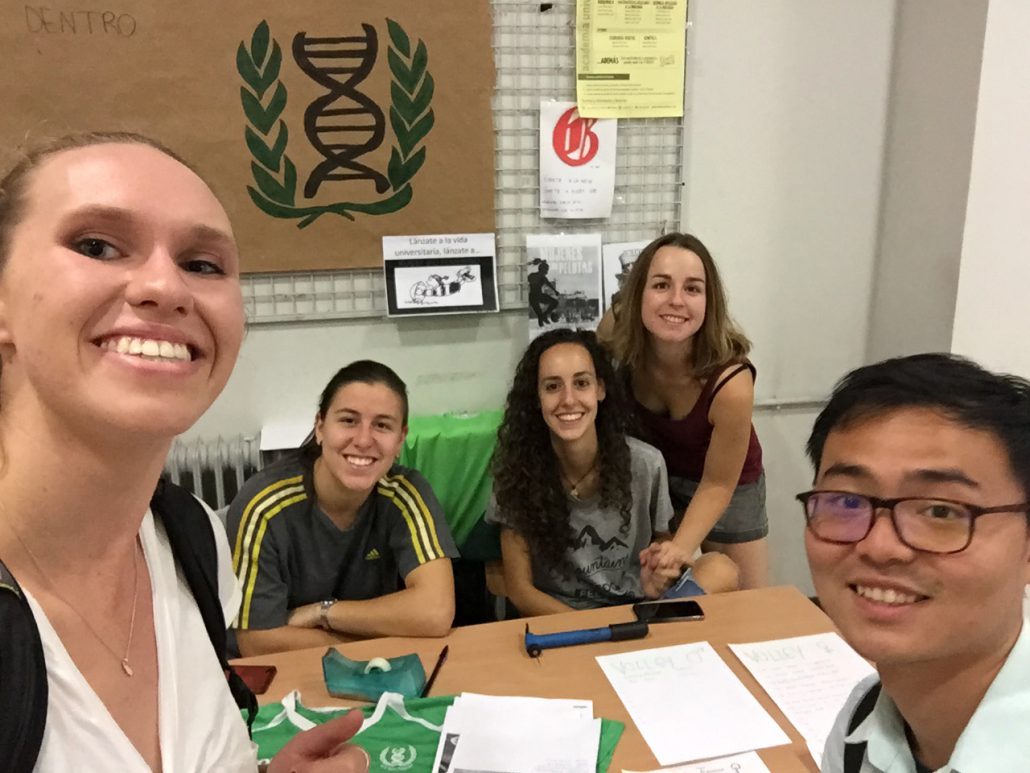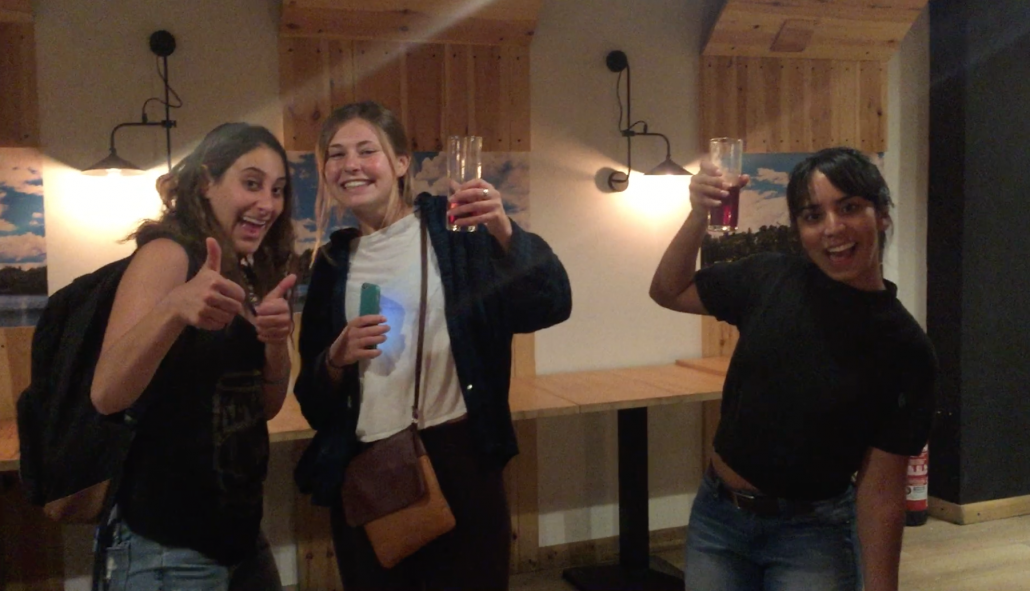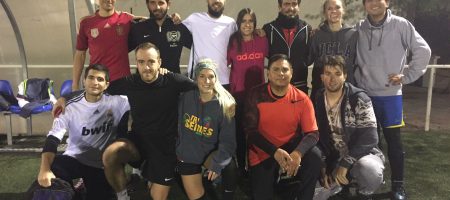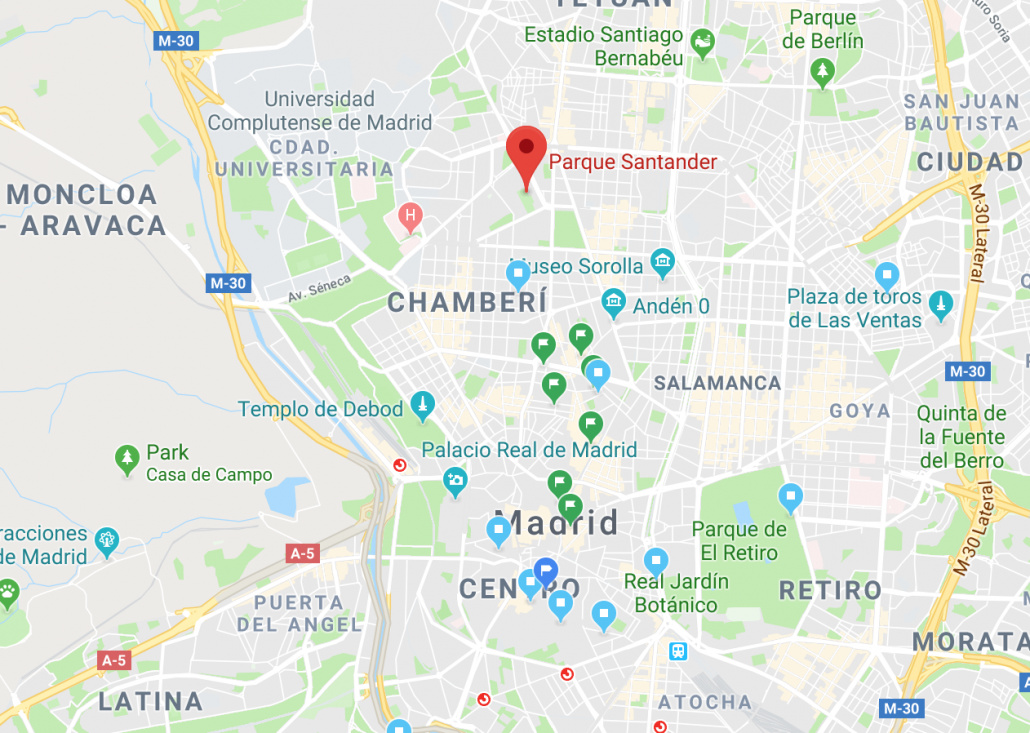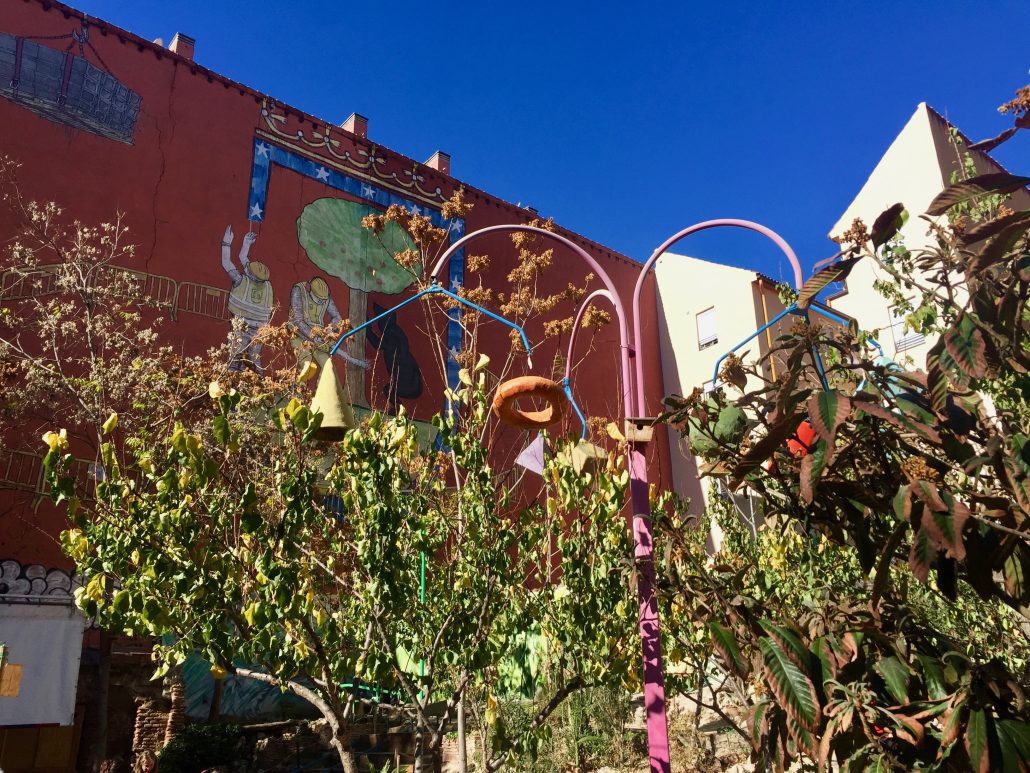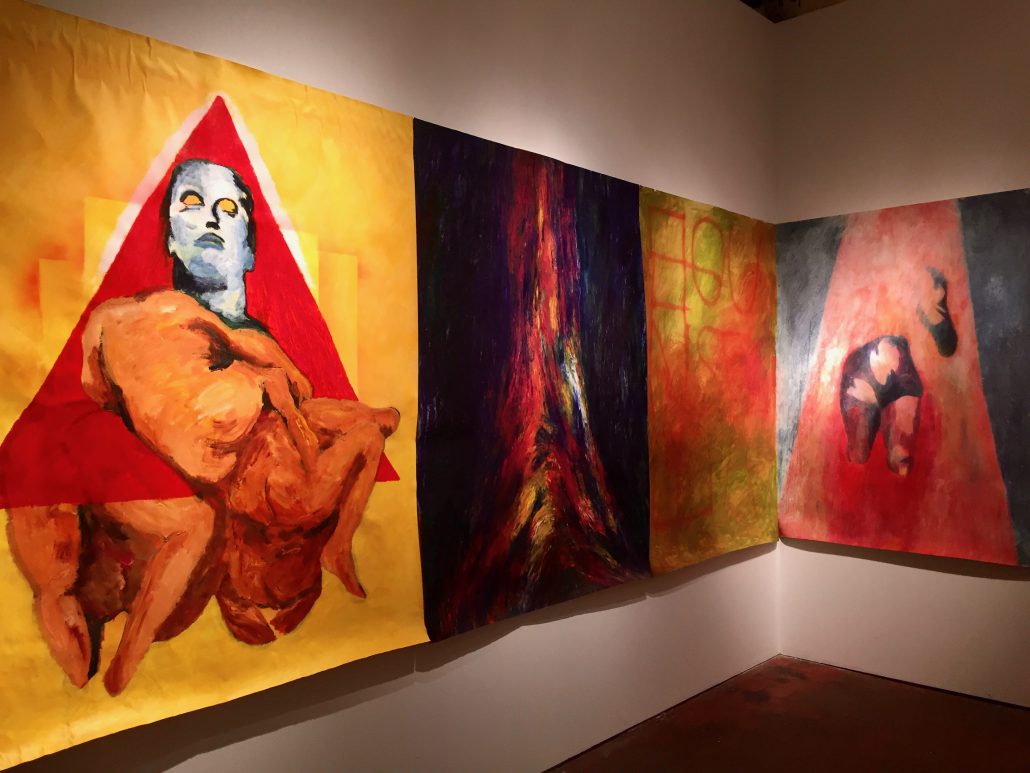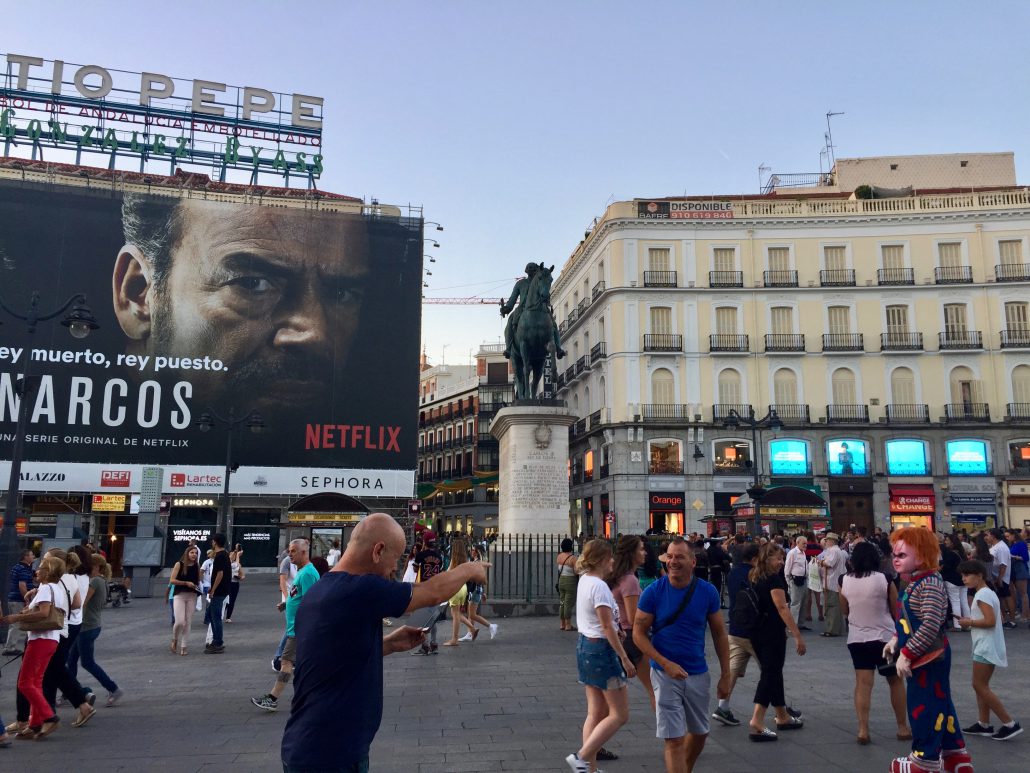Spain | Lil’ Girl, Big City
BY NINA CHIKANOV
For me, Madrid is a perfectly sized city.
It feels bigger than San Francisco, yet smaller than Los Angeles, and includes a great metro, bus, and train system that connects all regions together, making it very accessible for those without cars. Because of its size, there were plenty of things to do and explore within the bounds of the city that kept me entertained on weekends where I chose to stick around town instead of venturing to other parts of Spain or Europe. In this regard, I think I easily adapted to Madrid because it was big enough to provide never-ending surprises, yet small enough that it did not overwhelm me with its depth or breadth of opportunity—and for my first time living in a big city (not on a college campus) it was the perfect mix of comfort and adventure.
While there are many memories from my time abroad, some are more well-documented than others. Overall, I think my photographs paint a comprehensive (yet not complete) picture of what the city has to offer and definitely reflect some of my most valued activities that helped me feel at home abroad.
Some of my favorite moments can be loosely grouped into the following three categories:
1. Views
2. Art
3. Lil’ Things (Misc.)
Views
Some people don’t think views are worth it, but some of my best memories are from looking down at a cityscape from above. I will climb mountains and scale buildings for that moment of serenity that comes from peering out over a landscape that is so vast you forget about people and think about how lucky you are to be alive 🙂
Paseos de Cercedilla
Hiking in Northern Madrid in Cercedilla one of my first weekends abroad was exactly what I needed to center myself after feelings of disorientation and overstimulation of the first week away from home.
About an hour away by commuter train from the center of Madrid, Cercedilla borders el Parque Regional Cuenca Alta Manzanares and features tons of trails of varying difficulty and landscape.
Armed with a bag of grapes and full water bottles, my friend Hank and I ventured through the woods, across creeks, and up hills to see the city from above. This place also has hidden gems, like a sundial and a rock fortress—all within a short trek from the trailhead! Just make sure to grab some snacks before making the trip, since the town is rather small and there’s not too many shops close to the train station.

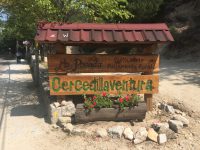

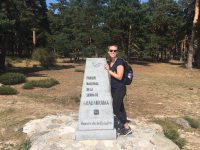

Hank with grapes, a sign for a restaurant on the climb up to the top, the sundial, a sign for the national park, and finally the view looking down at central Madrid from the top!
Valle de los Caídos (Valley of the Fallen)
The next hike we took was to the Valley of the Fallen, close to the region of El Escorial. This landmark is rather unique, not only because it has a 500-foot-tall cross, but also due to its controversial history.
Many forget that Spain was ruled under a dictatorship for nearly 40 years. Francisco Franco first
came to power in 1939 after defeating the Republicans in the Spanish Civil War. He continued to rule until 1979, when he died of natural causes. Construction of the basilica and the monument of the valley, however, started immediately in 1940 and was meant to honor and bury those who died in the Civil War. Over 18 years later, in 1959, construction was complete. Today, Franco is buried there alongside the leader of the Spanish Fascist party, José Antonio Primo de Rivera.
The hike itself isn’t difficult, but the site is secluded enough that it’s quite an adventure to get there. Danielle and I decided to check out the monument on one of our days off, and had to catch a bus early in the morning headed towards El Escorial.
Naturally, we missed the stop the first time around since we didn’t know exactly where we were going, so we took a second bus headed back to Madrid from the end destination. Once we arrived at the entrance, the woman at the gate told us we had a 6-km trek ahead of us. Since we were excited to hike, we waved her off and told her that was no problem, and went on our way.
Turns out the entire “hike” is along the side of a road that leads directly to the basilica and the cross. Countless cars passed us by as we wandered by, passing random cemeteries and fauna in the process. When you finally reach the top, the cross and basilica are truly a feat to witness.
Even though the Valley of the Fallen is a constant reminder of Spain under dictatorship, its magnificence is hard to wave off. I’d definitely recommend seeing it for yourself (and maybe considering hitchhiking with a car on the way down to catch the bus…definitely faster than walking down the same highway again!)


Left: Danielle and I next to a sign warning us to keep an eye out for misc. woodland creatures. Right: The cross and basilica from the entrance to the site.
Parque de las Siete Tetas
Another beautiful view with significantly less walking is the cityscape at Parque de las Siete Tetas, a 40-minute metro ride from Sol (the city center). Although it boasts a rather peculiar (yet fitting) name, the park offers great views of the city from any of its seven hills, especially at sunset. A great place to have a picnic and relax with friends after a long day.

 Círculo de Bellas Artes
Círculo de Bellas Artes
Last but not least, the rooftop at Círculo de Bellas Artes is a more frequented destination by tourists and visitors. While there is often a long line to catch a glimpse of the sunset from the top, I’d recommend entering earlier and scoping out the art exhibits hosted in the building to get the most out of the entry ticket fee. This spot offers panoramic views of the center of the city, and while it is more touristy I still think it’s worth checking out!


Art
If you’re looking for a diversity of different art forms, Conde Duque Cultural Center has it all. I stumbled upon a really cool interpretive dance performance which focused on themes of human relationships and choices in a super unique way – all six performers had their shoes stuck in
place throughout the performance and were completely silent, relying on live saxophonists to guide them through their story. For only 10 euros, I was able to glimpse into Madrid’s dance scene.
Besides dance, Conde Duque features music, theatre, cinema, and more! With their always-rotating exhibitions, you can definitely come here more than once without getting bored.
Museums
If you’re looking for permanent collections, check out the Prado Museum for more classic art and the Reina Sofía Museum for contemporary pieces. As part of my “Images and Icons” class, we focused heavily on contemporary art and paid around 5 two-hour long visits to Reina Sofía. With such a large permanent collection, it’s impossible to see it all at once. But the good thing is that museums are free for students, so you can go any time you want!


A few pieces found in Museo de Reina Sofía, including “Spectator of Spectators” by Equipo Crónica on the right.
The Sorolla Museum also has an impressive permanent collection from Joaquín Sorolla, a Spanish impressionist painter from Valencia who died in Madrid. While the museum only features his works, it is unique in the fact that the space where the museum lies today is his real home from when he was living in Madrid.


Sarolla Museum
Galleries
I found that the art scene is rather dynamic in Madrid, with many galleries and rotating exhibitions.
Close to the ACCENT Study Center there is a small space called White Lab Gallery that features artists for a few weeks at a time. It’s a nice space to relax and drink a cup of coffee and find new local art! Similarly, in the neighborhood of Lavapiés right across from the Muros (see next), is a café called Swinton & Grant with an exhibition space downstairs.

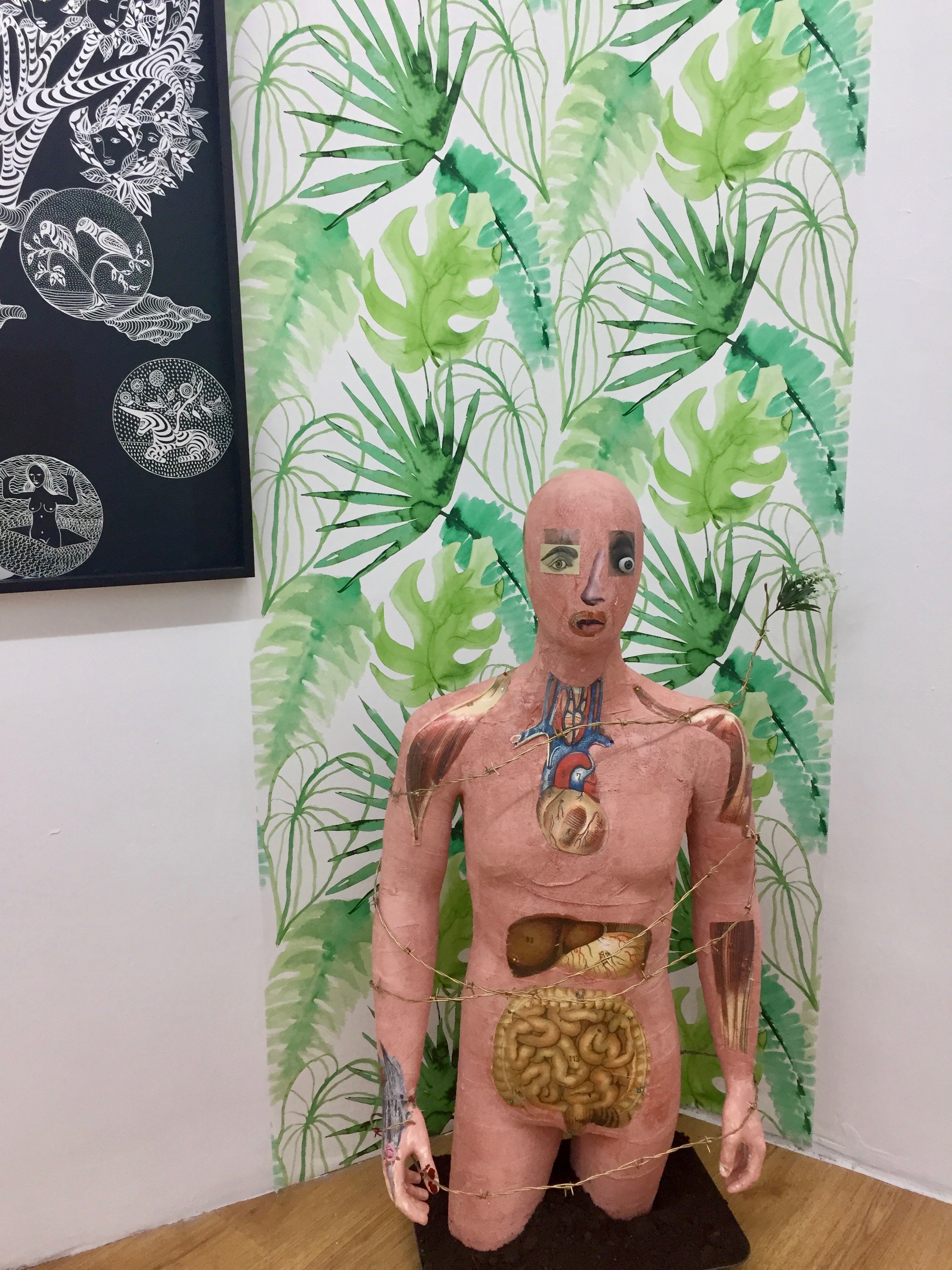
Left: Paintings at White Lab. Right: A peice featured at Swinton & Grant.
For the highest concentration of murals, head to the Muros at La Tabacalera. This project features 20-30 commissioned murals which rotate every two years, with the most recent installation being in 2016. Right inside the walls of the old tobacco factory you can wander the space and take in the constantly changing murals and tags. On the other half of La Tabacalera, there is a more organized exhibition that also changes every few months.
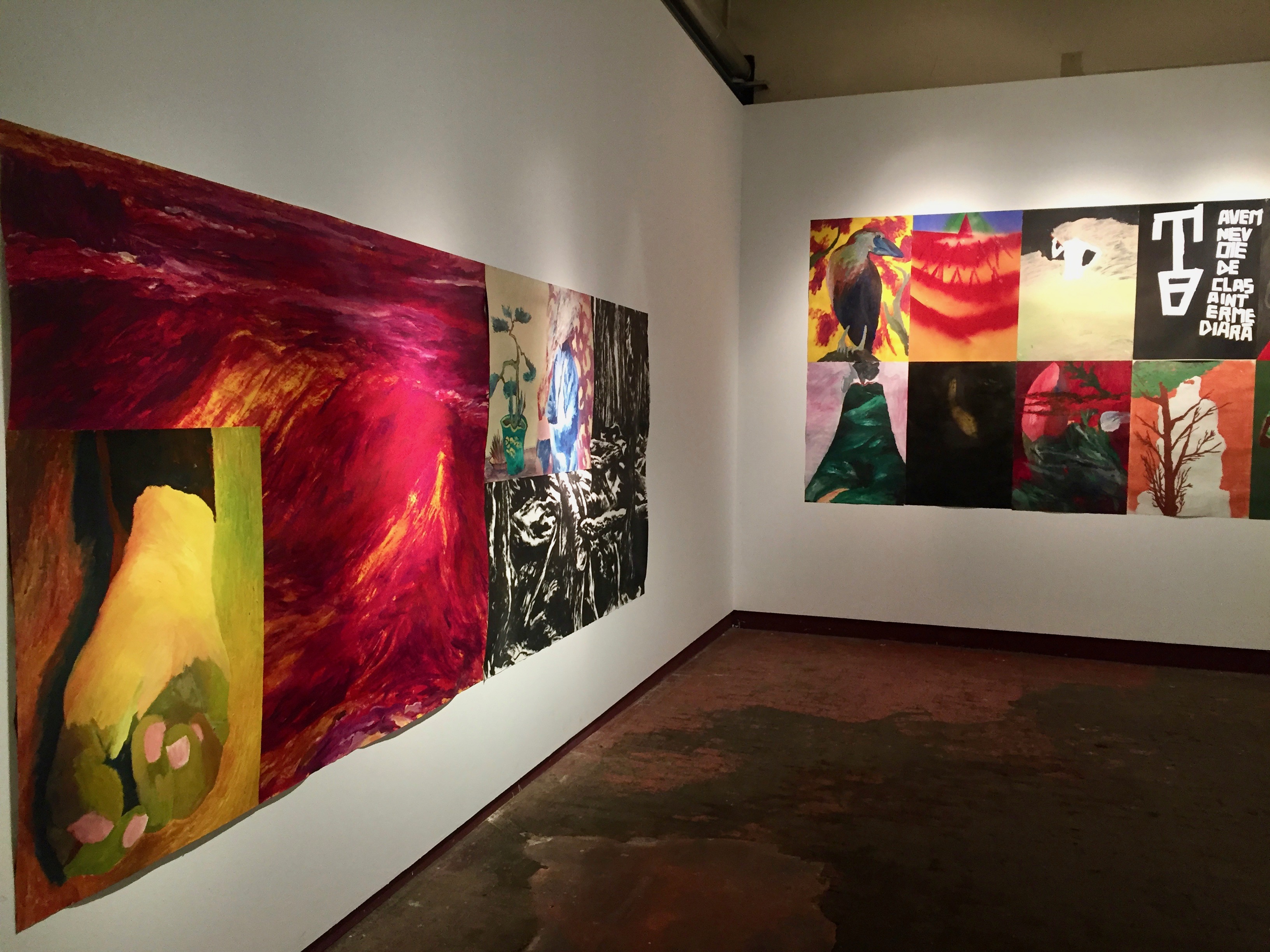


From left to right: An exhibit in La Tabacalera, murals from the Muros project, non-commissioned mural of Dalí on the inside of space.
The cultural center of La Tabacalera is also a great gathering space for different groups in Madrid. When exploring, keep an eye out for the schedules of many different music, dance, and circus groups, if not more! I got the chance to learn how to climb silks and play around on the trapeze by going to one of these open group sessions, and sometimes I even joined in on the bachata socials held in one of the dance rooms!
Last but not least, there is even an exhibition space in the Madrid City Hall. With nearly four floors of changing exhibitions, the space called Centro Centro features local artists and a diversity of mediums, incorporating audio, video, photo, and more. The exhibitions here are often informative and highlight different movements and cultural events in Madrid’s history.


Lil’ Things (Misc.)
While finding the best views and exploring the art scene are fabulous ways to get to know a city, the best gems are found just by wandering, and sometimes following the crowds.
On Sundays, Madrid hosts its very own public flea market called El Rastro in the La Latina / Lavapiés neighborhoods. It sometimes feels like the entire city is wandering these booths, bargaining for clothes, jewelry, household items, books, and more. The street performers love to capture the crowd during these busy Sundays, so even if you’re not looking to buy anything it’s still entertaining to wander around the block.
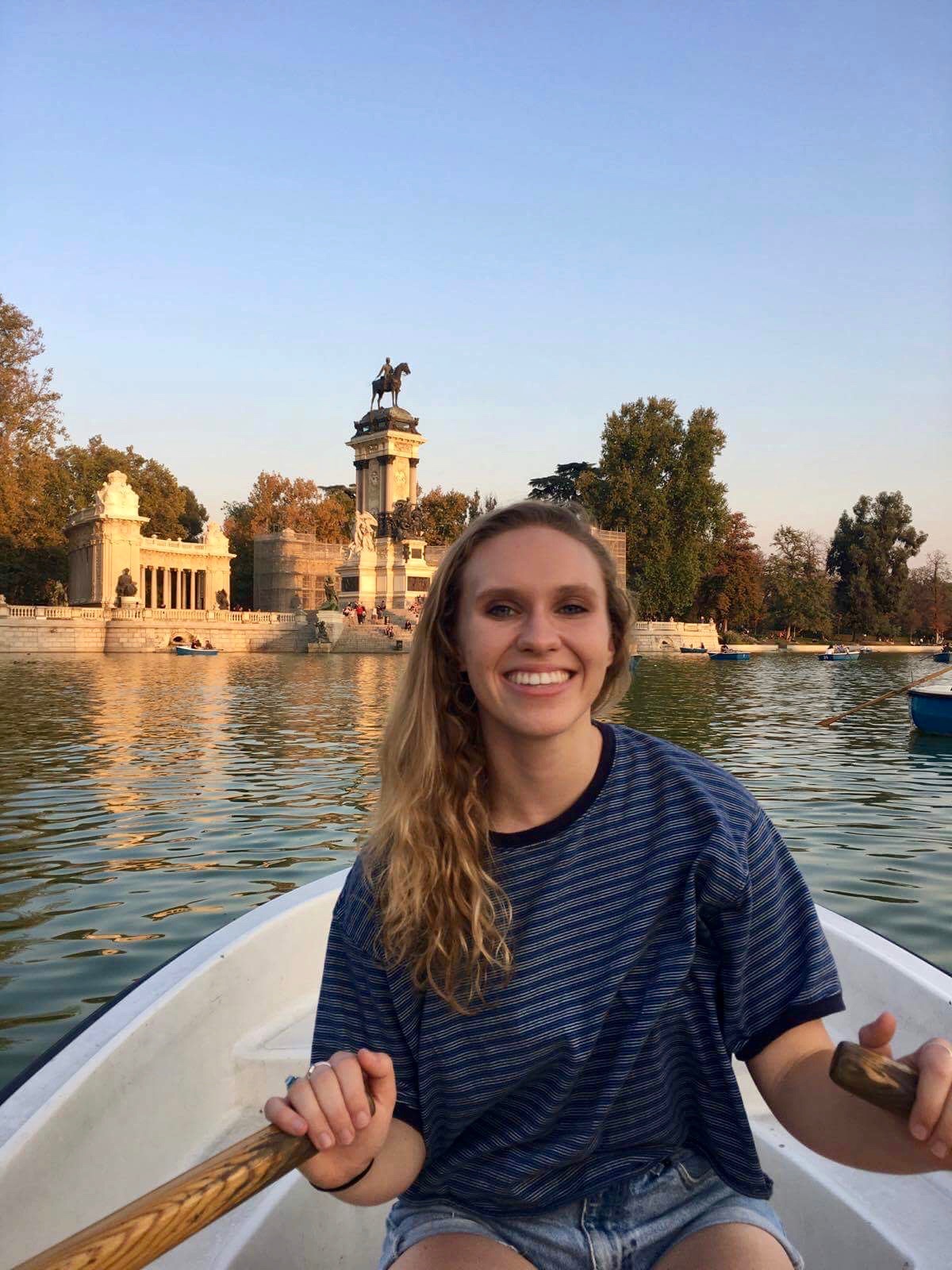
Me on a boat in Retiro Park!
Hanging out in El Retiro Park is always a blast. With a park so big, there are so many cool mini-destinations, such as the crystal palace, various sculptures, Retiro’s very own library, and of course, the lake in the middle of the park that is always filled with tourists, young couples, or ambitious youngsters on boats.
There are countless places to enjoy a peaceful, leisurely lunch, and hunting for the most affordable menu del día where you can get two hearty courses with dessert, a drink, and bread for 8 euro is the most rewarding experience for both your wallet and your stomach. 🙂
We once did an activity in Negotiating Identities that was like a self-guided tour of the city. By making up rules to guide this tour such as “at the next plaza, follow the first person you see who is using their cell-phone for 3 minutes, and then walk towards your left for 5 minutes,” for example, you can add spontaneity to your exploration and wander into nooks and crannies of the city that you may not otherwise have seen.
Either way – my main piece of advice for anyone going abroad, especially in a place as easy to travel as Europe: don’t let the excitement of being in Europe take you away from the excitement of your host city. While it’s great to travel outside of the country, there is also so much wonder held right where you choose to study. Three months may seem like a long time at first, but it’ll be over before you know it, so start exploring!
Cuídate,
Nina
Nina Chikanov studied abroad in Madrid, Spain in fall 2017: http://eap.ucop.edu/OurPrograms/spain/Pages/contemporary_spain_madrid.aspx





